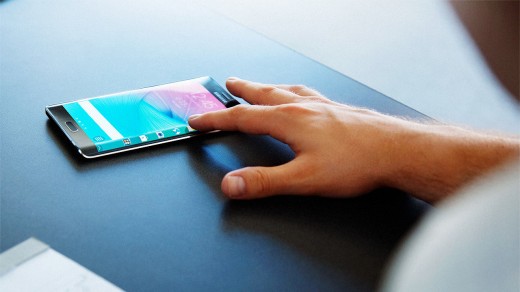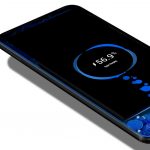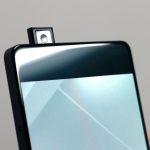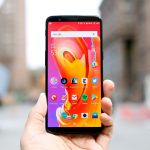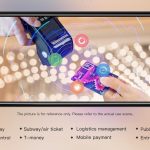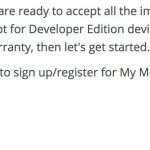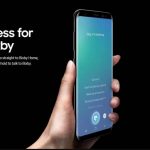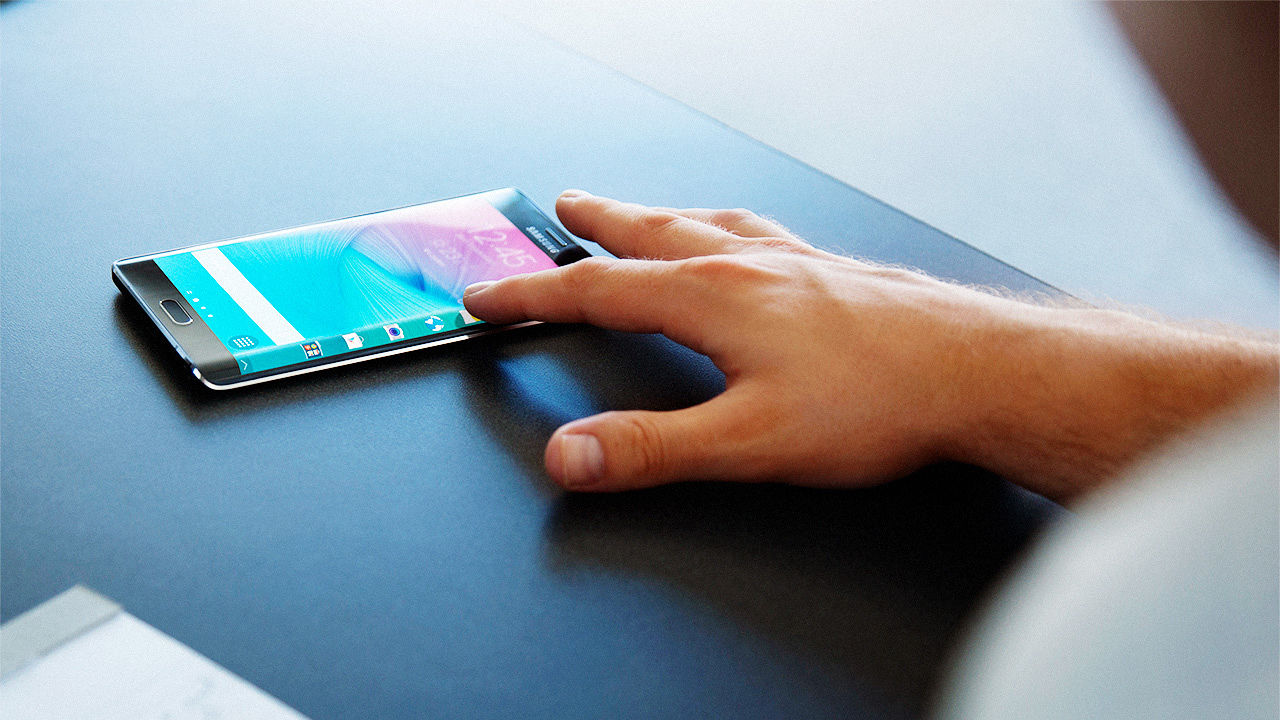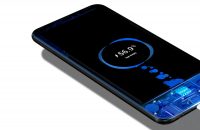Samsung Galaxy Note Edge Review: A Little More Than A Gimmick, A Little Less Than A Breakthrough
At the CES conference back in January 2013, Samsung showed off a prototype smartphone with a striking feature. In effect, it threw the cell phone industry a curve. The top, bottom, and left-hand sides of the screen were just as rigidly rectangular as those of any garden-variety phone. But rather than smacking into a conventional border, the right-hand edge gracefully curved downward, a little like the way a magazine or book page bends toward the binding. It was a triumph of engineering ingenuity. You know what, though? Manufacturing a curved screen is a cakewalk compared to figuring out useful things to do with it once it exists. So it’s not shocking that it took Samsung almost two years to release a phone based on that prototype. The phone is the Galaxy Note Edge, and it’s a new, extremely-top-of-the-line model in Samsung’s already high-end Galaxy Note line. (Samsung provided me with a unit for review.) The price will vary depending on which carrier and payment option you choose, but in no instance will the phone come cheap. On a two-year contract, for instance, AT&T is charging $400—$100 more than the Galaxy Note 4 and double the price of the the Galaxy S5.
Two Screens In One
What Samsung decided to do with that curved side of the screen is to treat it as a sort of long, skinny, secondary display. While the rest of the display is devoted to whatever app you’re running, the Edge’s edge is available for other stuff: shortcuts to apps, alerts such as incoming phone calls, widgets of various sorts, and even mini-games. It’s a form of multitasking which is right in line with the Galaxy Note line’s emphasis on PC-like power features.
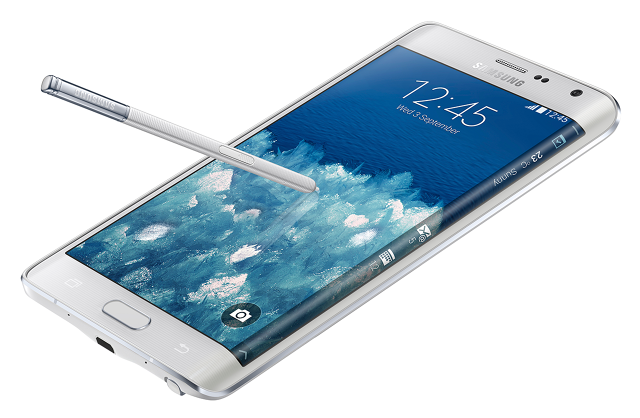
Which brings up one crucial fact about the Note Edge. Except for the curved edge and some new software features which take advantage of it, this is essentially the same phone as Samsung’s new Galaxy Note 4. Software-wise, for instance, they perform the same tricks, such as letting you open up (certain) apps in a multi-window mode. The Note Edge has the same reasonably classy metal frame and leatherette back as the Note 4; the same vivid Super AMOLED screen technology; the same S Pen stylus for note-taking and doodling; the same quad-core processor and terrific 16-megapixel rear camera with optical stabilization. Both phones have oversized batteries which are practically impossible to drain in a single day of use. They also sport fast-charging capability: A half-hour plugged into the included AC adapter gets them to 50% capacity. There are still areas where these two phones suffer from Samsung-itis: the tendency to do many, many things but failing to do all of them well. For example, the fingerprint scanner requires you to drag your finger precisely over the home button, a far tougher maneuver to perform than the firm squeeze used by the iPhone’s Touch ID. Samsung will never do polished simplicity as well as Apple does. But after so many generations of refinement, both of these Notes are attractive options if you want a big, big phone with lots of features.
Big n’ Wide
Mathematically speaking, the Note Edge screen is a smidge smaller than the one on the Note 4: 5.6” instead of 5.7”. But when you inspect them side by side, the most obvious difference is that Samsung widened the Note Edge to accommodate 160 extra horizontal pixels of screen space along the right edge. Like any huge phone, it’s a handful, but only slightly more so than the Note 4. (Of course, if you’re fretting that a phone might be too big your hand, you shouldn’t even be flirting with buying either the Note 4 or the Note Edge. Get yourself a nice, midsized handset like the iPhone 6 or Samsung’s own iPhone-esque Galaxy Alpha.)
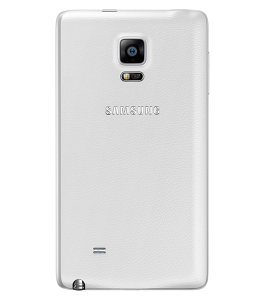
Most smartphones work equally well whether you’re part of the right-handed majority or (like me) a southpaw. The Edge, however, favors righties. You can easily reach the curved area if you’re holding the phone in your right hand and operating it with your right thumb, or if you’re holding it in your left hand and using your right forefinger. But If you try to operate it with your left finger or left thumb, you’ll cover the screen and hurt your wrist. You can rotate the phone 180 degrees to put the edge on the left side, but I can’t imagine that anyone will find that a workable fix: Among other things, you’d have to remember to rotate it back every time you took a phone call. (For the record, I’m a southpaw, but I hold my phone in my right hand, so I didn’t find the Edge’s right-handedness to be a major issue.)
Apps On The Side
Samsung calls the interface which appears on the rightmost area of the display the Edge Screen; you reveal it by swiping to the left, hide it by swiping to the right, and trigger various action by swiping up and down. Among other things, the Edge Screen can: Store favorite apps. Much like the Windows Taskbar and OS X Dock, the edge can hold shortcuts to applications and folders, putting much-used items a swipe and a tap away. You can use up to two app bars, each which can hold up to 20 programs.

Streamline interfaces. In the Note Edge’s S Note note-taker and camera apps, the controls—such as the camera’s shutter button—are all tucked along the edge. That opens up all of the main area for your notes and the camera viewfinder, respectively.

Manage notifications. If your phone rings, for instance, the call info shows up along the edge rather than on top of whatever you might happen to be doing at the time.

Display widgets. There are ones which show ticker-style updates from Yahoo—news, sports, and stocks—along with a player for Samsung’s Milk music service, quick-access controls for the S Note note taker, stats from the S Health fitness program, and more.

Provide a few utilities. There’s a stopwatch, a countdown timer, a flashlight, and a ruler which lets you measure anything—as long as it’s no more than 4 inches long.

Play some games. Such as one involving making burgers. They’re very, very basic, but might be a welcome distraction if you’re killing time during a boring group meeting on something like Google Hangouts.

Double as an alarm clock. Lay the phone flat on your nightstand, and it will display the time along its edge during hours you can specify—very dimly, in order to conserve power, but legibly enough to read in a dark room. Some of these features are mighty handy: The ability to dock your most-used apps along the edge, for instance. But others don’t amount to anything more than silly clutter. (Is there even one real person out with a burning desire to keep tabs on a scrolling list of Twitter hashtags while working in another app?) There’s something inherently eccentric about any software interface designed to fit in a 160-by-1440-pixel sliver of screen resolution. If you’re holding the phone in standard portrait orientation, icons face upwards, but any text longer than your unread mail count runs sideways, which is the only way to make it fit. Still, even if the Edge Screen is a tad odd, it’s also fun. Swiping your finger or thumb along the curved surface has some of the same novelty that now-mundane touch-screen gestures such as pinch-to-zoom did in the months immediately after the first iPhone debuted in 2007. And I never found my finger accidentally skidding from the Edge Screen into the main area or vice versa.

Quirks and all, the Edge Screen is intriguing enough to wish it did more. And maybe it will: Samsung is providing third-party developers with the software tools they need to build features for it. Other music services, for instance, could build players similar to the one Samsung provides for Milk. If enough developers take up the challenge with enough gusto, the Edge’s edge could get a lot more useful quickly. For now, the Galaxy Note Edge is a nice phone, but the curved screen, despite being its signature feature, is more of a sideshow than main event. Give it a look if you’re in the market for a huge, powerful phone, and aren’t fazed by its price tag. But the Galaxy Note 4—cheaper, more fully-baked, and identical except for the Edge Screen—doesn’t look any less appealing now that the Edge is here.
(129)

